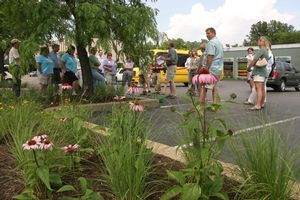
A Grow Native! professional tour visits the Alpine Shop located in downtown Kirkwood. The Alpine Shop landscape features native plants supplied by Bohn's Farm and Greenhouses. (Photo credit: Robert Weaver, The Gateway Gardener Magazine)
Native Plants
Specializing in Native Plants of the Lower Midwest
Bohn's Farm and Greenhouses strives to produce, within a managed production nursery setting, the most extensive selection of Midwest native perennials found in the lower Midwest. Our extensive selection of ecotype species and landscape "nativars" are grown in a variety of container sizes to suit the needs of both the landscape professional and the retail merchant. Special production emphasis in recent years includes native species required for constructing rain gardens, bioswales, and stormwater detention and retension infrastructures according to the "St.Louis County Phase II Stormwater Management Plan" and "Sustainable Practices" adopted by the St. Louis Metropolitan Sewer District (MSD).
Additional Information
Bohn's Farm wishes to extend a sincere thank you to the Shaw Nature Reserve team for their educational assistance to expand our knowledge of native plants via their educational programs and ongoing development and management of The Whitmire Wildflower Garden.
An active member since the inception of the program, Bohn's Farm also values association with the Grow Native! a native plant awareness program jointly managed by the Missori Department of Conservation and Missouri Department of Agriculture.
Bohn's Farm RESPONSIBLE CODE OF CONDUCT: All native plants we offer are propagated from seeds responsibly collected or vegetative cuttings from controlled nursery-produced stock plants. We DO NOT purchase propagated materials from plant material collected in the wild.
Calamagrostis canadensisGrass, Bluejoint
[
More Info
]
|
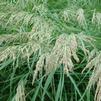
|
Calamintha nepeta ssp. nepetaCalamint
Plumes of delicate light blue flowers float over shiny mint-scented foliage from early summer to fall. Use in rock gardens, herb gardens and perennial borders. Grow in full sun with good drainage.
[
More Info
]
|
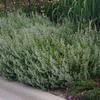
|
Callirhoe bushiiPoppy Mallow, Bush'S
Cup shaped magenta flowers bloom June through August. Rambling flower stems are more erect than those of the similar C. inbolucrata. Long tap root provides good drought tolerance buts makes transplanting of established plants more difficult.
[
More Info
]
|
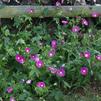
|
Callirhoe involucrataPoppy Mallow, Purple
Showy, cup-shaped magenta flowers bloom June through frost. Foliage forms trailing stems that forms excellent ground cover or hangs over walls. Drought tolerant.
[
More Info
]
|
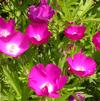
|
Carex albicansSedge, Whitetinge
[
More Info
]
|
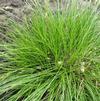
|
Carex amphibolaSedge, Creek
Compact, clump forming sedge with shiny, semi-evergreen foliage. Vigorous grower. Widely adaptable, preferring dry to moderate moisture conditions. A Midwest native.
[
More Info
]
|
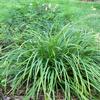
|
Carex annectensSedge, Yellow Fruited
Missouri Native sedge with attractive yellow flower spikelet's and compact tufts of fine foliage. Flowers form in May, seeds in June. aka C. brachyglossa
[
More Info
]
|
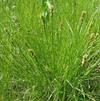
|
Carex bicknelliiSedge, Bicknell'S
Carex bicknellii can be found in North America from Eastern half of Canada and south to Kansas. It grows in dry and moist prairies, open woodlands and rocky areas. This Carex tolerates dry locations better than many sedges. It is useful for rain gardens, meadows, and areas where drought-tolerant plants are required. Bicknell’s Sedge grows in tufts of green, narrow, grasslike foliage and spreads by rhizomes. Copper-colored, oval-shaped seedheads appear in late spring giving it one of its common names. Carex bicknellii is named in honor of Eugene Pintard Bicknell (1859-1925), who is known for his keen observations of plant and animal life.
[
More Info
]
|
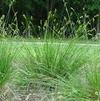
|
Carex breviorSedge, Shortbeak
A common sedge able to grow almost anywhere, most often found in the wild in dry, disturbed areas. Also called Plains Oval Sedge, Shortbeak Sedge actively grows during the spring and fall when soil temperatures are cool like most sedges (cool-season growers). In summer triangular leafy stems rise above low tufts of narrow grass-like foliage. The culms bear prickly green oval spikelets that transition into golden brown seed clusters.Leaf blades are usually about 1’ long and 1/8” wide. The leaf sheaths at the base of each blade has an unusual whitish color and an almost glassy appearance.
In late spring multiple leafy culms rise above the foliage to 3-4’. Each culm bears 2-6 oval flower spikes. Each green spikes contain upper pistillate and lower staminate florets. The spikelets are tapered at the base and bluntly pointed at the tip. The flowers transition into reddish brown summer seed spikes.
Plants are 1-4’ tall with an equal spread.
[
More Info
]
|
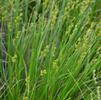
|
Carex buxbaumiiSedge, Brown Bog
[
More Info
]
|
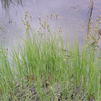
|
Carex crinitaSedge, Fringed
[
More Info
]
|
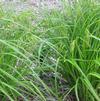
|
Carex eburneaSedge, Bristle-Leaved
Soft, thread-like, green foliage forms a spherical clump. Insignificant whitish-green flowers in April. Occurs naturally in limestone outcrops but also tolerates acid conditions.
[
More Info
]
|
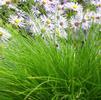
|
Carex flaccospermaSedge, Blue Wood
Evergreen sedge forms attractive clumps of narrow, blue-green leaves. Thrives in moist conditions but will tolerate drought. An American native groundcover for shade. Greenish-white flower is insignificant.
[
More Info
]
|
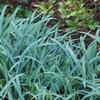
|
Carex frankiiSedge, Frank'S
Hardy grass-like plant with green foliage. Bristle-like, brown seed heads in May to September. Native to floodplain woodlands. AKA Bristly Cattail Sedge.
[
More Info
]
|
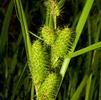
|
Carex grayiSedge, Bur
Attractive, evergreen pleated foliage is lime green in full sun and dark green in part shade. Spiked flowers in May form star-like seed heads. A Midwest native.
[
More Info
]
|
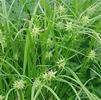
|
Carex hirsutellaSedge, Fuzzy Wuzzy
[
More Info
]
|
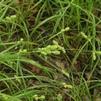
|
Carex muskingumensisSedge, Palm
A dense, clump-forming sedge which is grown for its foliage effect. Produces rigid, erect stems to 20" tall with 8" long, pointed, grass-like, light green leaves radiating from the stem tops. Commonly called palm sedge since the leaves somewhat superficially resemble miniature palm fronds. A Missouri native which is found most often in wooded swamps and on wooded flood plains of rivers. Spread by rhizomes and self-seeding. Insignificant flowers appear in May on terminal spikes which are not showy but are noticeable and of some interest and persist throughout the summer. Foliage promptly turns yellow after frost. Species is named for the Muskingum River in Ohio.
[
More Info
]
|
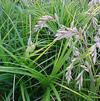
|
Carex pensylvanicaSedge, Pennsylvania
A compact sedge with arching, semi-evergreen, fine-texture foliage. An excellent shade to part shade groundcover. Tolerant of tough urban conditions, especially under trees. An American native.
[
More Info
]
|
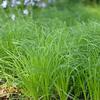
|
Carex radiataSedge, Straight-Styled Wood
Fine textured, grass-like, medium green foliage forms a tidy clump. A drought tolerant groundcover for shady sites. A Midwest native.
[
More Info
]
|
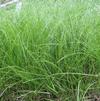
|
Carex shortianaSedge, Short'S
[
More Info
]
|
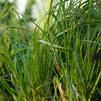
|
Carex strictaSedge, Tussock
A wetland native that grows in 2-3' tall clumps about 2' wide. As old leaves die, they build up around the living plant, making a "tussock" or little hill. It grows in or near water and spreads by rhizomes.
[
More Info
]
|
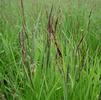
|
Carex vulpinoideaSedge, Fox
Missouri native sedge grows on moist open ground in swamps, wet prairies or near water, is one of the most abundant sedges in the state. Foliage consist of narrow grass-like leaf blades. The seed heads, which spray out attractively from the center of the clump, resemble a fox's tail but are short-lived.
[
More Info
]
|
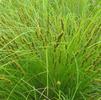
|
Cephalanthus occidentalisButtonbush
Blooms late June or July.
[
More Info
]
|

|
Chasmanthium (syn Uniola) latifoliumGrass, Northern River Oats
Upright clumps of bamboo-like foliage. Green foliage turns copper in fall and brown in winter. Attractive flat flower spikes hang down from flowering stems. Prefers light shade and damp locations. Can self-sow.
[
More Info
]
|
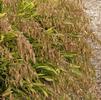
|
Chelone glabraTurtlehead
White spike flowers with a tinge of pink appear August through October. Flowers look like a turtle's head. Deep green foliage on upright stems looks good all season. A Midwest native.
[
More Info
]
|
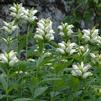
|
Conoclinium coelestinumMist Flower (Wild Ageratum)
Blooms September through October. (FKA Eupatorium coelestinum)
[
More Info
]
|
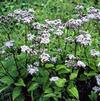
|
Coreopsis lanceolataCoreopsis, Lance-Leaf
Showy, single, gold-yellow flowers on tall stems in May and June.
[
More Info
]
|
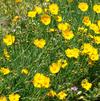
|
Coreopsis palmataCoreopsis, Prairie
Pale yellow flowers--much softer in color than those of our other native coreopsis--are carried on stiff, upright stems for several weeks, beginning in late spring. Spreads by rhizomes and seed, eventually forming large colonies.
[
More Info
]
|
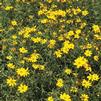
|
Coreopsis tripterisCoreopsis, Tall
[
More Info
]
|
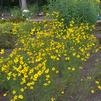
|
